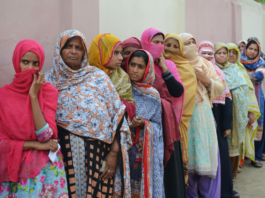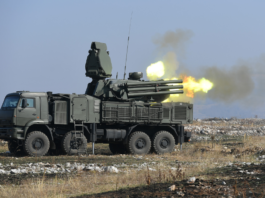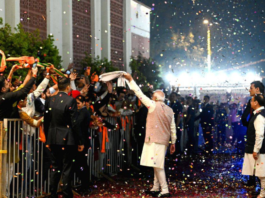
Atmanirbhar Bharat: The defence sector in India has been making news frequently due to its significant growth in the development, acquisition, and export of its own weapons and ammunition. The Indian Military-Industrial Complex (MIC) has gone from being one of the world’s top importers of weapons prior to the Covid-19 epidemic to exporting defence goods worth Rs 16,000 crore to over 89 countries in FY 2022–2023. However, there is still a considerable amount of work ahead of it.
The indigenous weapons systems of India, such as BrahMos, Tejas, Prachand, Arjun, and C4ISR (Command, Control, Communications, Computers, Intelligence, Surveillance and Reconnaissance) tools like Revathi, Lakshya, etc., are displayed on the DRDO website. Does it affect the dynamics of regional, if not global, security? Is India appropriately using the “defence diplomacy” card?
Increasing the amount of defence items produced domestically and exporting them in compliance with international norms offers benefits for the economy, security, and politics. Both large and small, well-established and up-and-coming businesses, like Godrej, Mahindra, Tata, and L&T, are preparing to take advantage of the lucrative defence and aerospace opportunity that has been waiting for them. India apparently intends to modernise its military forces, allocating an average of Rs 1.5 lakh crore every year until 2030.
With Pakistan, China, Bangladesh, and Myanmar as its neighbours, India should make greater investments in obtaining weapons and ammunition as well as border security. Is India exploiting the current state of peace? In its ascent to prominence in South Asia and the broader Indo-Pacific region, India deftly navigates the complex terrain of power projection.
The traditional interpretation of international relations theory holds that the appropriate response to the availability of material power is a great-power foreign policy. A simple and convincing explanation for the actions of large powers is that their capabilities lead to more ambitious ambitions; that is, they act as they do because they can do so. Realist theories of international relations are based on this idea.
Based on empirical research, the concept of international threat provides a valid justification for particular foreign policy goals. The arms races are the most well-known illustration of this type of dynamic. So much so that anytime the phrase “power projection” is spoken, thoughts of military upgrading frequently come to mind.
Although this is generally accurate, India has recently started to realise the possibility of projecting its own technological force. Put another way, India needs to strengthen internal balance, which means concentrating on modernising its military internally. This move may result in India addressing some of the long-standing shortcomings in its defence strategy. If so, those changes will have a far greater impact on India’s relationship with the US and its confrontation with China than any flimsy cooperative gestures.
What’s Wrong With Defence Imports?
The South Block in Delhi realised that excessive import investment suggested greater long-term risks. First, through military imports, India ended up strengthening the might of other countries’ Military Industrial Complexes (MICs) rather than its own.
The second argument that has affected Indian decision-makers is the idea that the country may become exposed to external weapons embargoes that may cut off supplies. Rajnath Singh completely backed this theory, although it is not frequently discussed in detail.
Political Stratagems from India’s holy texts
Our itihasas offer useful and pertinent stratagems and provide plenty of examples for modern challenges. Numerous treatises on successful government, foreign policy agendas, and the non-negotiables listed below have been produced by Indian political intellectuals.
The Mahabharata’s Vana Parva Chapter 193 verse 29 says:
“api śākaṃ pacānasya sukhaṃ vai maghavana gṛhe
arjitaṃ svena vīryeṇa na vyapāśritya kañcana”
“O Maghvan (Lord Indra), even he is happy who cooks only less leaves (for his food) earned by his efforts without having to depend on others,” is what it signifies. Well, in terms of national security, self-reliance should be ensured while putting equal emphasis on quality and quantity.
Kosha and Durga were two traits of a Rajya that Bharatiya political philosophers never minimized—instead, they accentuated. Kosha and Durga (treasury and fortifications, in this case) are mutually inclusive, as Bharatiya political philosophers have argued in several works. Kautilya knew full well that robust finances, sufficient reserve funds, and a sizable treasury correlate with a safe and prosperous state.
Impact of Atmanirbhar Bharat on Global Geopolitics
The Indian government is realising that the potency of its armed forces correlates with its influence in regional and international affairs. Indian strategic thought has mostly stayed localised.
The ability of the Indian armed forces to project power and exercise influence into the Indian Ocean has long been considered one of their most important geopolitical concerns. Nevertheless, they haven’t have the required skills up until recently.
Assuming that India’s GDP would reach $5.944 billion (around Rs 600 crore) and that Delhi allocates 3% of its GDP to the defence sector, we may expect to see $179 billion allocated to our armed forces, which will serve as a significant catalyst.
In a more contemplative sense, equilibrium—internal or external—is more practical in times of peace. subsequently discouraging and swaying other regional actors. India may become more involved in maintaining global peace and security if it develops its own sophisticated military.
Security issues such as piracy and terrorism affect many states and can only be addressed through multilateral cooperation. Given that the Indian Navy has a qualitative and quantitative advantage in the area, India would be better able to regulate both sides of the Indian Ocean and preserve open maritime lanes for international trade.
It will be interesting to see if India’s rapidly growing defence industries really do play a major role in defending India’s standing in the great power race. The defence industry is experiencing a rebirth as a result of exposure to a broad range of public-private collaborations.
According to several analysts, this shift may have an effect on global politics, armed conflicts, and crises. Conversely, the arms race also generates new opportunities and fosters new types of conflict, changing the character of war and the political divide between militarily powerful and weaker nations.
How Crucial is Indigenisation?
The motivation for indigenization is financial. No country will opt for indigenization if it means paying more to risk losing a strategic advantage to another country; if the delivery schedule is tight and does not allow for labor-intensive indigenization efforts; or if the MoD’s capacity to apply follow-on order information for indigenized products is doubtful because of long-standing budgetary constraints.
More outcomes can be achieved with a mission-mode approach to indigenization that is more focused and modest. If not, significant decisions will need to be made that trade off acquisition speed, quality, or expense. If such considerations are not made, India may find itself paying exorbitant fees for subpar technology far later than necessary in the worst-case scenario.
India can project force beyond of its regional zone of influence thanks to its nuclear weapons capacity, but we cannot depend solely on ICBMs. The development of non-nuclear forces also becomes crucial.
The main topics of conversation when it comes to national security are increasingly domestic variables like MICs and other actors. India is now able to effectively communicate new geopolitical imperatives through the use of “Defence Diplomacy,” a strategic tool.



